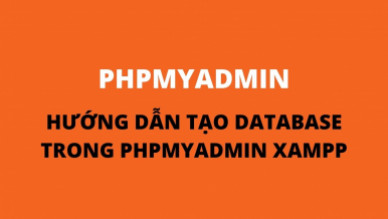I. What is Blockchain?
Blockchain is a chain-block technology or a database system that allows for secure data transmission interconnected through encryption.
Blockchain stores data in the form of blocks, which, when filled, are encrypted and locked. The secured data then becomes immutable. These blocks, once created, are linked together into a chain.
Currently, Blockchain has evolved through various versions:
- Blockchain 1.0: Mainly used for cryptocurrencies like Bitcoin, ...
- Blockchain 2.0: Allows the construction of finance-related applications like smart contracts.
- Blockchain 3.0: Enables the development of monitoring and governance programs for various sectors from healthcare to education, elections, e-commerce, ...
II. Characteristics of Blockchain
1. Distributed, Decentralized Data
Today's prevalent data storage model is centralized, meaning all transaction information is stored at a central server system in a certain location.
Centralized data storage makes data highly prone to loss in events like earthquakes, tsunamis, or hacker attacks. Blockchain emerged to address this issue.
Blockchain uses a distributed data storage model, meaning instead of being stored in a central server, the data is stored in all the computers that have joined the blockchain network. Thus, even in events like earthquakes or tsunamis in one region or country, the data remains intact and easily recoverable since it's stored in other computers worldwide.
Blockchain essentially operates on a Peer to Peer (P2P) computer network model where every participating computer, known as a node, has equal function and authority. The system thrives on majority support; the more computers participate, the more secure and less hackable the system becomes.
2. Uses Decentralized Consensus Mechanism
This unique feature truly makes Blockchain a technology of transparency.
For instance, if Bob transfers money to Alice and a hacker tries to seize that money, the transfer cannot happen without the consensus of everyone else in the Blockchain system, preventing the hacker's success.
Once a transaction occurs, it's stored in a new, encrypted, immutable block.
However, this consensus mechanism has its drawbacks, such as the potential for a 51% attack. If someone owns 51% of the system's nodes, they could manipulate the system. In reality, this is challenging and expensive, especially for large systems, and such actions would violate the principles of consensus and distributed data in blockchain, immediately prompting countermeasures.
3. Immutable and Transparent Data
Blockchain employs hashing algorithms and asymmetric cryptography to ensure its data is immutable and unalterable.
III. Structure of Blockchain
1. Block Structure
A block in Blockchain comprises the following basic components:
- Hash: A unique code representing the block.
- Transaction data: Text or any data file, the content of transactions...
- Timestamp: When the block was created.
- Previous block hash: This hash of the preceding block links blocks into an unbreakable chain.
2. Block Linking Mechanism
Blocks are linked as each succeeding block stores the hash of the previous one in sequence.
If a hacker tries modifying a block's content, its hash instantly changes while the following block still contains the original hash, invalidating the new hash and breaking the chain. The only way to validate the new hash is to update it for the following block and all subsequent ones. Due to Blockchain's decentralized consensus mechanism, the hacker would need to update over 51% of the network's nodes to succeed.
3. Hash Function
A hash function scrambles the binary code of digital data, making the original data a unique, non-repetitive string of characters.
Common Hashing Algorithms
- MD5: 128-bit, 32-character string length, less secure.
- SHA256: 256-bit, 64-character string length, highly secure. Bitcoin uses this algorithm.
Besides hashing, blockchain also uses public key encryption (RSA) technology, or public-private key pairs.
IV. Practical Applications of Blockchain
Beyond Bitcoin, Blockchain is used for recording event data, medical records, identity management, transaction management, food origin tracing, and in voting systems.
Industries potentially impacted by Blockchain technology include:
- Automotive
- Manufacturing
- Technology, Media, & Telecommunications
- Financial Services
- Art & Recreation
- Healthcare
- Insurance
- Retail
- Public Sector
- Real Estate
- Agriculture
- Mining
- Transport & Logistics
- Utility Infrastructure
Submit feedback
Your email address will not be made public. Fields marked are required *
Search
Trend
-
The most commonly used HTML tags
02-01-2020 . 11k view
-
Websites for earning money at home by typing documents
05-17-2023 . 9k view
-
Earn money by answering surveys with Toluna
01-12-2020 . 7k view
-
Guide to creating a database in phpMyAdmin XAMPP
04-25-2020 . 4k view
















0 feedback